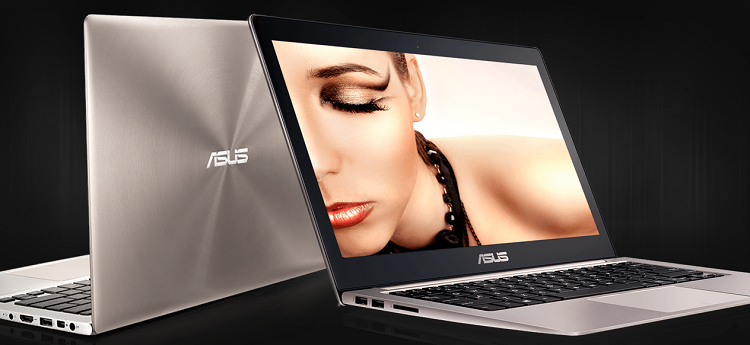One of the most fragmented, more rarefied sectors is screens. There are hundreds of patents and dozens of codenames, all spouting that are the best of the best options. Plasma, CRT, LCD, LED, OLED, AMOLED … And then would come the battle of resolutions: HDReady, Quad HD, Full HD, this once-yes-that-yes-HD, etc; technologies have been progressing but that some, by its very conception, have lagged behind.
If you’ve ever delved between the characteristics of the monitors you’ve alerted some offer different profiles configuration. These are based on historical standards, although each system is optimized according to its own configuration possibilities: Adobe RGB, NTSC (1953), PAL / SECAM, SMPTE, and countless more. The difference between them orbits the space of the color spectrum and parameters on where the colors are located. The RGB space is defined from the three primary colors and a white central junction point. Depending on the X / Y coordinates of each color, and the resulting mixture shows the profile.

Image Source: Google Image
With so much choice, it is easy to end up finding monitors that use soon darken screens that promise ‘twice colors’ and are not such aberrations in luminescence and so on. Light, by the way, it is measured in candelas per square meter. A mid-range LCD usually offers brightness of 200 cm / m2. Necessary, indoors, is approximately 80-100 cm / m2.
Furthermore, a fact that often the secular also is the contrast ratio, which refers to the ability to play different tonalities. 500:1 always play more shades than 300:1. Hence care professional monitors the dark tones, even at low light, which is imperceptible to differentiate color.
IPS technology is the key
How to solve the defects of each technology? It is not divided into watertight compartments. There is a technology that, like the One Ring, LCD and LED, making the best of each option. Although there are some more, see the 3 most popular variants:
- Panels TN (Twisted Nematic) LCD in which the position of the liquid crystal is perpendicular to the glass panels.
- Panels VA (Vertical Alignment): LCD screen on which the position of the liquid crystals is parallel to the glass panels.
- Panels IPS (In-Plane Switching) LCD screen identical provision to the VA but with a viewing angle up to 178° and performance / consumption evolved.
IPS screen -In-Plane Switching or Advanced Display Panel – consists of a conventional LCD, liquid crystal, and a layer of LED spotlights illuminating behind the colors of the LCD screen. This evolution of TFT refers in its name in-plane switching how LCD crystals are electrically excited. And not only allow a wider viewing angle: consume between 30 and 60% less energy than a standard VA panel and offer better image contrast.
ASUS Splendid Technology: A better way of seeing things
As far as colors are concerned, it is relatively easy to offer a strong contrast, focusing on the dark tones. But sometimes distortions and imperfections in the middle ranks due to balance problems occur. For example: abusing a contrast can cause a red look like a warm, bright orange or a snowy meadow, with many shades of white. That’s the hardest part to gauge: the gray intermediates. The devil is in the nuances.
You may also like to read another article on Lab-Soft: This is what you should have in your notebook for high performance and so fulfills the Asus UX501
Asus has patented a technology -developed by its internal team ‘Golden Eye’- that optimizes the means to reduce noise while improving conversion rates. On the one hand, a time faster response: thus two benefits are obtained. The time it takes a pixel to change from one color to another, essential for moving images, and on the other, it offers a more dynamic contrast, brightness and saturation smarter.
The ASUS Splendid Video Enhancement Technology offers, from your own application Utility Splendid, different interchangeable modes at any time, depending on the need of the moment:
- Normal mode ideal for computing, navigation and everyday scenarios.
- Theater mode: Soft contrast, somewhat duller; focused on the film.
- Gamma Mode: Adjust the colors using user settings.
- Intense ‘vivid’ Color Mode: Increases saturation and intensity of contrast range.
- Soft mode: Designed for long periods in front of the screen, soft and subtle approach.
Capturing reality
One of the keys to detect the quality of an image lies in lighting. The use of IPS has been standardized in most brands precisely because of their improvement in this aspect. And thanks to mass production technology manufacturers such as Hitachi, the price of IPS technology has decreased exponentially in recent years.
But not all models are equal. In the ranges noted at the outset we must be added the quality of the manufacturing materials. It is very common to find laptops with good lighting performance but annoying reflections from light.
Asus fixes that problem with a matte finish, an anti – reflective coating on their computers ZenBook UX303. This is the ZenBook ‘UA’ and ‘UB’ series. As for brightness, the UX303 offers 300cd / m2, in addition to dynamic contrast, a utility where, according detect the balance of the scene and lights.
And on the contrast ratio, the UX303 have 770:1, one of the highest values existing between notebooks. In addition, the brightness UX303 distributed uniformly, avoiding the igniting concentrically formed when the central areas are brighter than the edges, altering color and the temperature thereof.
Going back to the beginning of all existing options, the current standard (sRGB) dictates how we see the world in internet. Any photograph of Instagram, Flickr or Facebook is encoded under those parameters. Therefore, a laptop does not need essentially more. The key is, as indicated in this article, in a coherent balance between resolution and exposure.


